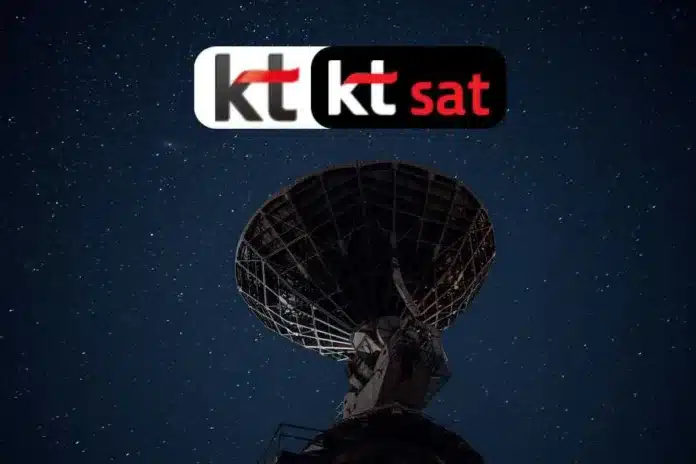KT has recently made a significant leap in communications technology by successfully connecting its 5G ground network to a geostationary satellite, signaling a new chapter in global connectivity. This breakthrough, achieved in partnership with KT Sat, marks the first time the 5G Non-Terrestrial Network (NTN) standard has been applied to a satellite in geostationary Earth orbit (GEO). The test, conducted with Mugunghwa 6 (KoreaSat 6) satellite, represents a historic moment not just for KT but for the entire telecommunications industry.
What is 5G NTN?
The 5G NTN standard, as outlined in the 3GPP’s Release 17 in 2022, enables 5G networks to operate beyond terrestrial boundaries. Traditionally, 5G networks have been reliant on ground-based infrastructure. However, with NTN, connectivity can be extended to areas where laying physical infrastructure is challenging or impossible—such as remote mountainous regions, the sea, or even aircraft. This fusion of terrestrial and satellite networks promises to revolutionize how and where we experience seamless connectivity.
While the data transmission speeds in a satellite-based 5G NTN network may be slower compared to terrestrial 5G, the potential for expansive coverage is unparalleled. For the first time, areas previously left out of the high-speed 5G network loop—like rural locations, aircraft routes, and large bodies of water—can now enjoy connectivity.
KT’s Groundbreaking Test with Mugunghwa 6
KT’s successful test using the Mugunghwa 6 satellite—a geostationary satellite located 35,800 kilometers above the Earth—sets a precedent for future advancements in NTN technology. Conducted at KT Sat’s Geumsan Satellite Centre, the test was a collaborative effort involving key partners like Rohde & Schwarz Korea and Viavi Solutions Korea.
One of the main hurdles in satellite communications is managing the propagation delay caused by the vast distance between Earth and satellites. For a satellite 35,800 km away, the delay in signal transmission becomes a significant challenge. KT successfully addressed this issue by implementing 5G NTN technology capable of compensating for these delays, as well as for frequency shifts caused by the satellite’s movement (Doppler effect).
This achievement demonstrates KT’s capability to effectively overcome the limitations of satellite communications, a step that opens new avenues for 5G deployment in regions where terrestrial networks are not feasible. More than that, it sets the stage for the further development of 5G NTN technologies, expanding possibilities for global coverage and accessibility.
The Importance of 3GPP’s Release 17
The 3rd Generation Partnership Project (3GPP) has been instrumental in defining global telecommunications standards. Release 17, which introduces 5G NTN, allows for seamless integration of satellite and terrestrial networks, ensuring uninterrupted connectivity even in the most remote locations. The release sets the foundation for KT’s innovation, enabling them to push boundaries and explore new territories in the field of communications.
With 5G NTN, companies like KT can help bridge the digital divide, ensuring that even isolated regions can access the benefits of modern connectivity. Additionally, NTN offers valuable solutions for industries reliant on mobile communications in remote areas, such as shipping, aviation, and oil and gas sectors.
Overcoming the Challenges of Satellite Communication
The propagation delay and Doppler effect are two major challenges when integrating satellite communication with terrestrial networks. The long distance between Earth and geostationary satellites leads to latency issues—causing delays in data transmission that can disrupt real-time communication. Additionally, satellites in motion experience frequency shifts (the Doppler effect), which can impact the quality and reliability of the connection.
In their recent test, KT managed to address both these challenges effectively. By employing advanced algorithms and signal processing techniques, they compensated for the signal delay and frequency shifts, enabling seamless communication between the ground-based 5G network and the satellite.
This achievement is significant, not only in terms of technology but also for its implications in future 5G NTN applications. By overcoming these technical hurdles, KT has paved the way for more widespread adoption of NTN technology, which could one day serve as a partial replacement for traditional terrestrial 5G networks.
What’s Next? KT’s Focus on Future NTN Innovations
KT’s ambition doesn’t stop at geostationary satellites. They are actively working on developing NTN technology that can integrate with multiple aerospace platforms, including medium-Earth orbit (MEO) and low-Earth orbit (LEO) satellites, as well as high-altitude platform stations (HAPS).
With 3GPP Release 19 already on the horizon, KT is laying the groundwork for the next generation of NTN technology. The future could see NTN acting as a full-fledged alternative to terrestrial 5G networks, providing global coverage in areas where building traditional infrastructure is not feasible. Such developments could transform the way we think about connectivity, making it truly borderless.
Impact on Global Connectivity
KT’s success in connecting 5G to a geostationary satellite could have wide-reaching impacts. It holds the potential to dramatically enhance global communications, particularly for industries like shipping, aviation, and disaster management, where real-time connectivity in remote locations is crucial.
Moreover, with the growing demand for reliable communications in rural and underserved regions, NTN technology could play a key role in bridging the connectivity gap. For nations that are still developing their telecommunications infrastructure, this could mean skipping the costly deployment of terrestrial networks and moving directly to satellite-based systems.
The future of global connectivity could well be shaped by the successful implementation of NTN technologies like those being pioneered by KT. As more satellites and high-altitude platforms come online, we can expect to see continuous advancements in the quality and reach of global communications.
Looking Towards the Future
As KT continues to push the boundaries of 5G NTN technology, it’s clear that the potential for global, seamless connectivity is no longer a distant dream. With the ability to connect terrestrial 5G networks to satellites and other aerospace platforms, the possibilities are limitless. From enabling communication in the most remote corners of the Earth to providing a reliable network for industries operating in harsh conditions, KT’s achievement is a significant step forward.
KT’s role in the development of the 5G NTN standard is likely to set a benchmark for other telecommunications companies, encouraging further innovation in the field. With Release 19 on the horizon and new tests planned, the future of 5G NTN looks brighter than ever.
Get your Training on 5G Satellite and 5G NTN
Don’t miss our 5G and satellite Training to learn more about this technology
Frequently Asked Questions
What is 5G NTN?
5G NTN (Non-Terrestrial Network) is a standard that allows 5G networks to operate via satellites and other non-terrestrial platforms, providing connectivity in areas where terrestrial 5G networks are not feasible.
How does KT’s satellite test work?
KT successfully connected their terrestrial 5G network to a geostationary satellite by overcoming propagation delays and the Doppler effect. This was done using the 5G NTN standard.
What is the significance of the Mugunghwa 6 satellite?
The Mugunghwa 6 satellite, or KoreaSat 6, was used in KT’s groundbreaking test. It orbits 35,800 km above the Earth and is a key component in proving the viability of 5G NTN technology.
What challenges do satellite communications face?
The main challenges include propagation delays due to the long distance from Earth to the satellite and frequency shifts caused by the movement of the satellite (Doppler effect). KT addressed both issues in their test.
What industries will benefit from 5G NTN?
Industries that operate in remote locations, such as aviation, shipping, and energy, will benefit from 5G NTN. It also has the potential to bridge the digital divide in rural areas.
What are KT’s plans for the future of 5G NTN?
KT plans to integrate NTN technology with MEO, LEO satellites, and HAPS platforms, and they are actively working on the 3GPP Release 19 standard to further enhance 5G NTN capabilities.
Benefit from Massive discount on our 5G Training with 5WorldPro.com
Start your 5G journey and obtain 5G certification
contact us: contact@5GWorldPro.com


